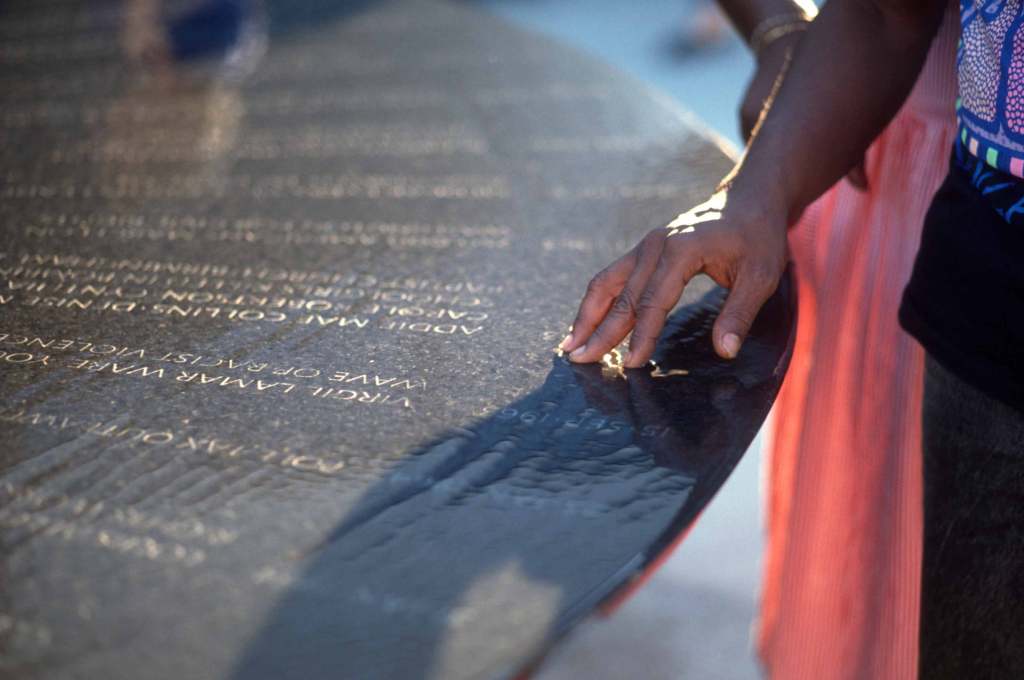
Bond. Julian Bond. It is the perfect name for our American treasure, whose ashes were scattered in the Gulf of Mexico over the weekend, almost a decade to the day after Katrina swept across the same waters. Like the British J. Bond, Horace Julian Bond had good looks and a deep, confident voice. To neutralize the diabolical, he went to dangerous places where others dared not go. His mission: Racial justice in America. But while the fictional Bond relied on a tricked-out Aston Martin, a Walther PPK, and monologuing villains to prevail, our genuine Bond won with passion, brilliance, and courage—and as I learned first-hand, profound generosity.
The news of his death took me back to the fall of 1989. It was my final year of law school, and Professor Bond had hired me as one of his teaching assistants for an undergraduate course at Harvard University, focused on the southern movement for civil rights. My fellow assistants and I were paid to learn the history of the movement from a man who built and led it, and then to reinforce that knowledge, each of us working with a subset of the unusually large group of undergraduates who had flocked to the course.
It’s hard to imagine a better person to convey the struggle for civil rights in America to college students: While an undergraduate at Morehouse University in Atlanta, Professor Bond founded and led the Student Nonviolent Coordinating Committee. Rather than sitting comfortably in a classroom studying justice, he went to the street and demanded it, created it. In the amphitheater-like room where class was held, his lectures had a concert-like quality. Far from dry recitations of facts, he engaged us in real talk about the sights, sounds, and dynamics of the contentious and deadly time that was the 1950s and 1960s. That history was his story. And it was because he cared so deeply about where civil rights would go in the future that he painstakingly schooled us on the past.
During that semester Professor Bond was also involved in establishing a national monument to preserve the stories of the women, men, and children martyred during the struggle for racial justice. He asked his teaching assistants to accompany him on a road trip from Massachusetts to Montgomery to participate in the memorial’s dedication ceremony. Alabama was a state we’d come to know well for its bus boycott led by Dr. King, its sinister police commissioner Bull Connor (who unleashed firehoses and German Shepherds on protestors), its bloody Sunday on the Edmund Pettus Bridge, and its four precious girls murdered in Birmingham’s Sixteenth Street Baptist Church bombing. So it was fitting for the Civil Rights Memorial to be anchored in front of the Southern Poverty Law Center, the Alabama-based organization Bond co-founded with Morris Dees to battle white supremacy and racial injustice in all its overt and insidious forms.
The monument is a large, cone-shaped granite table, like a spinning top balanced on its point. A thin sheet of water flows continuously across its circular face and down its sides. In designing it, architect Maya Lin was inspired by Dr. Martin Luther King’s words “until justice rolls down like waters and righteousness like a mighty stream,” and those words are inscribed on the monument’s high black granite wall. On top of the round table, like minutes on a clock, are forty names: those of Americans who perished amid the fight for civil rights, as well as those whose deaths exemplify the brutality faced by African Americans in the South.
Thousands of people attended the monument’s dedication in November of 1989, including family members of those whose names are captured in stone. At a reception the evening before the formal ceremony, movement giants and families who had made unimaginable sacrifices mingled, laughed, and reveled in the knowledge that their friends and relatives were finally being honored. I took a deep breath before speaking to Mamie Till Mobley, whose son Emmett Till is among those memorialized. In 1955, at the age of 14, Emmett was brutally tortured and killed for speaking to a white woman. At his funeral, Mrs. Mobley insisted on an open casket so the nation could see her son’s disfigured face and appreciate the effects of racial hatred. Decades later, she beamed as Professor Bond introduced us, and embraced me in a warm hug. Such introductions continued all night, as Professor Bond made his past our present. For me, a soon-to-be lawyer aspiring to work on civil rights, the experience was overwhelming. When Professor Bond introduced my colleagues and me to his friend Mrs. Rosa Parks, I feared my knees might give way.
The following morning at the official dedication, Bond gave a beautiful speech that helped explain why he so generously brought his teaching assistants on the trip. “There are those gathered here today who cannot remember the period when these sacrifices began, with its small cruelties and monstrous injustices, its petty indignities and its death-dealing inequities,” he said. “There are many too young to remember that from that seeming hopelessness there arose a mighty movement, simple in its tactics, overwhelming in its impact.” Being in Bond’s Montgomery made us part of that mighty movement.
I’ll always be grateful to Professor Bond for allowing me to see our country’s history through his eyes and experience, for having shared with me a magical sliver of his story. The Gulf is a fitting resting place for a man whose life’s work transformed the Southern states bordering its shores. For now he returns to the sea, rolling down, righteous, like a mighty stream.